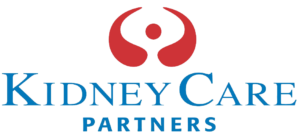DaVita Lobbies Against Dialysis Star-Rating Program’s Bell Curve, Measures
August 4, 2014
Published by Inside Health Policy
John Wilkerson
August 4, 2014
Chain dialysis company DaVita was taken by surprise when CMS recently introduced a star-rating program for dialysis facilities, and the company is urging the agency to make major changes to the program, which takes effect in October. DaVita executives said they support programs that rate performance but they dislike that the program grades on a curve, and they said its metrics are ill-suited to dialysis facilities and the program is out of sync with the end-stage renal disease quality rating program that has been in place for more than a decade.
CMS is using star-ratings across several sectors to help consumers compare providers and health plans. Nursing homes, Medicare Advantage plans and large physician groups already are subject to star-ratings programs, and CMS is putting in place a five-star rating system for hospitals, home health and dialysis. CMS also anticipates that in 2016 it will have quality-measure information on health plans on the marketplace and will begin work on a star-ratings system for those plans, too.
Kidney patients also are organizing against the program, a patient advocate said, but are still formulating an official position.
Allen Nissenson, the chief medical officer for DaVita Kidney Care, said the company doesn’t oppose star ratings, but he noted the program for end-stage renal disease differs from performance ratings other health care sectors.
Unlike other health care sectors, CMS has been grading the performance of dialysis facilities for some time with the Quality Incentive Program, and ESRD was the first prospective pay system to cut Medicare pay for facilities that miss performance targets. (Nissenson emphasized that DaVita performs well in that program and he expects DaVita facilities to score well on star ratings.) CMS is not ending that program so dialysis centers will be operating two quality-rating programs that score performance in very different ways, Nissenson said. Facilities already must post certificates showing their performance in the Quality Incentive Program, and now they’ll have to post a second certificate that shows their star rating.
However, at some facilities those certificates inevitably will send patients mixed messages, he said, because CMS plans to grade dialysis facilities on a curve in the star ratings program, and in the current quality program all facilities that meet quality goals are given good ratings. There are more than 6,000 dialysis facilities nationwide: 10 percent get five stars, 20 percent get four stars, 40 percent get three stars, 20 percent get two stars and 10 percent get one star. CMS describes two-star ratings as “below average” and facilities with one star are considered “poor.”
Adding to the discrepancy, the two programs use different measures, said Mahesh Krishnan, vice president for DaVita’s clinical innovation and public policy. The star-ratings program uses measures that are more appropriate for ESRD accountable care organizations because they measure outcomes that are outside of the control of dialysis facilities, such as the rate of blood transfusions that, although related to dialysis, are performed predominantly by hospitals — dialysis facilities perform 2 percent of transfusions, Krishnan said. Other measures that are misaligned with dialysis facilities are standardized mortality ratios and standardized hospitalization ratios, he added.
CMS’ Joel Andress, who works on both the star ratings and Quality Incentive Program, said during a provider call that the two programs measure performance differently because they have different goals. CMS uses the Quality Incentive Program to pay facilities for performance, and the star-ratings is intended to help patients choose among providers.
“We did analyze variation QIP scores with the variation star rating, and we found generally that facilities that received a payment penalty were more likely to receive a lower star rating,” Andress said. “So they do concord to some extent.”
Andress also said CMS is listening to industry’s concerns about the measures. However, he indicated that it’s too late to change the methodology for the first year of the program.
“We will be reconsidering the methodology as it currently stands in future years on an annual basis,” Andress said. — John Wilkerson (jwilkerson@iwpnews.com)
See the original article here.
